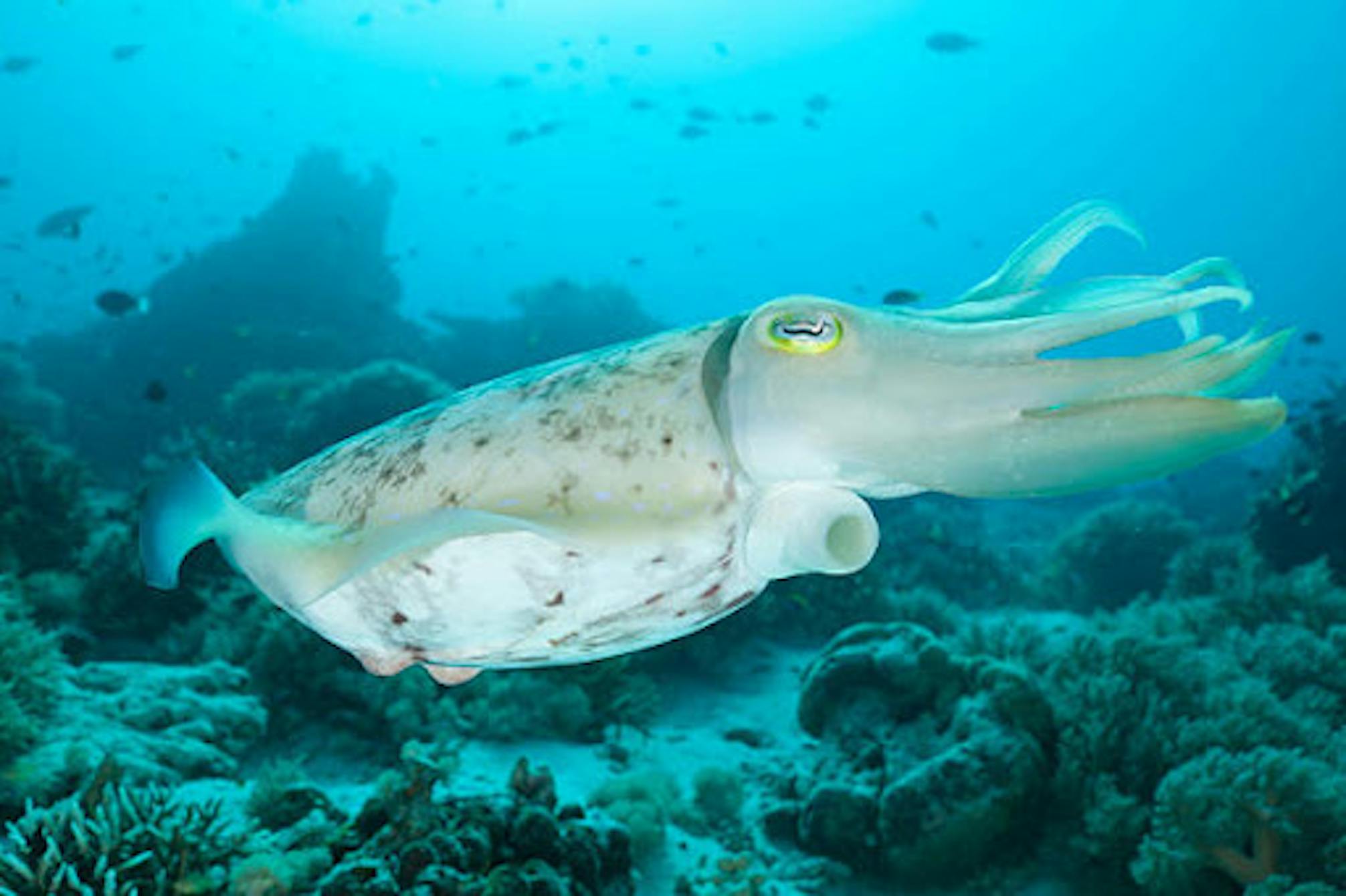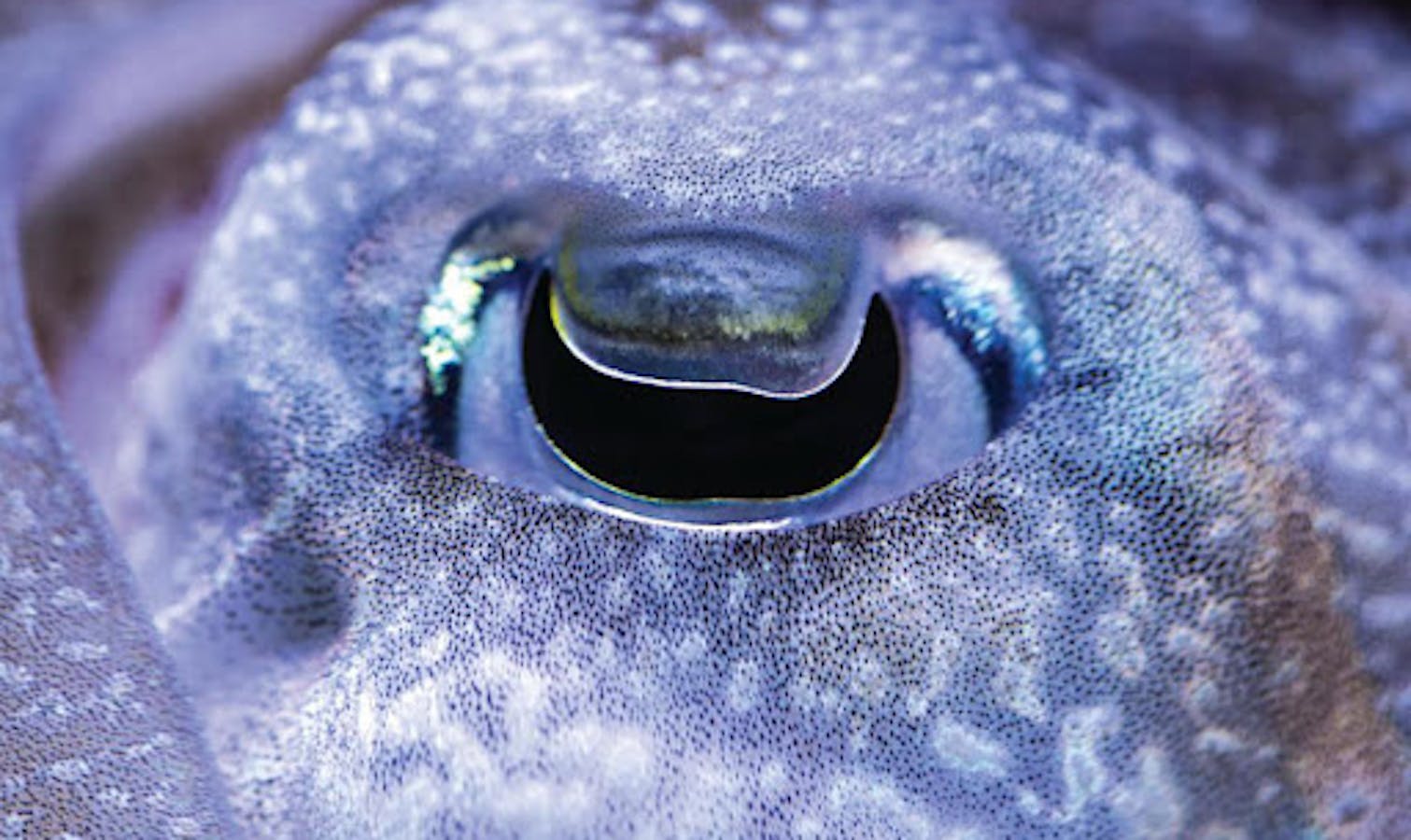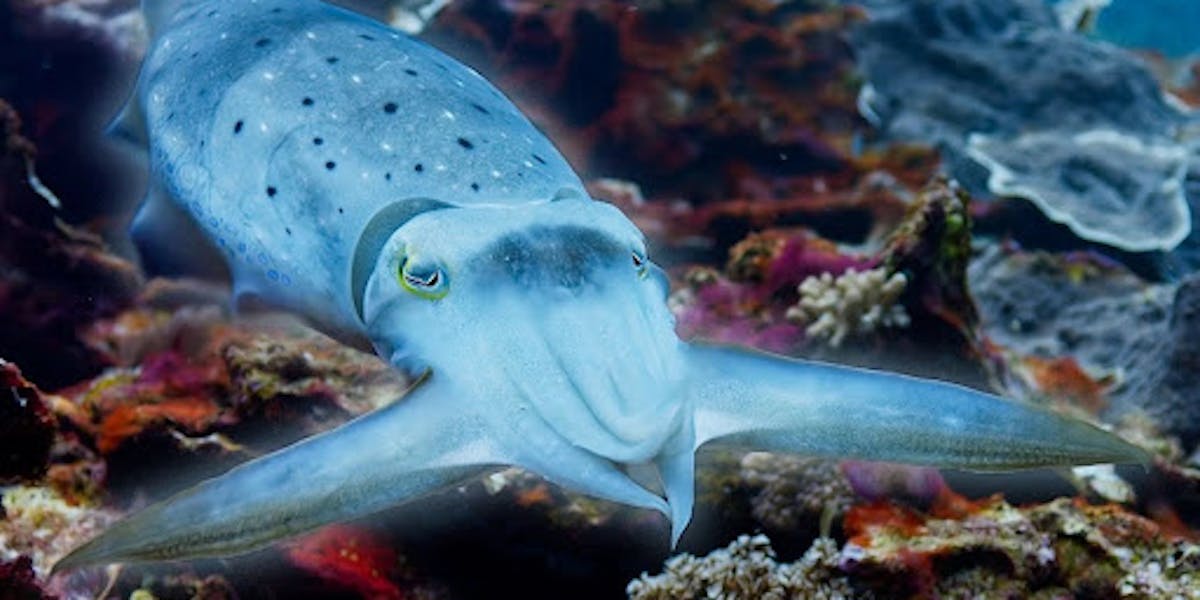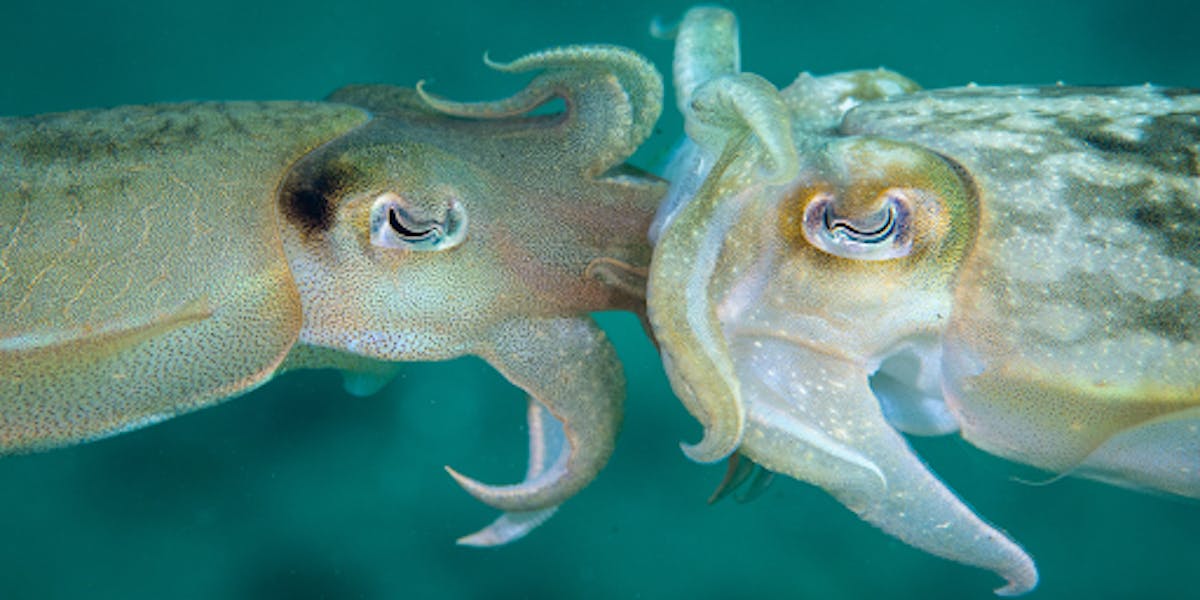Amazing Facts About Cuttlefish: The Masters of Camouflage

Many people confuse “cuttlefish” with “cuddlefish.” A cuddlefish sounds adorable and would probably be the perfect pet to give someone on Valentine's Day but, sadly, it does not exist. The cuttlefish, on the other hand, does exist and I bet its unique abilities and intelligence will surpass your expectations.
Contrary to its name, the cuttlefish is not a fish but an invertebrate, a mollusk to be exact. The cuttlefish is closely related to octopus and squid. Cuttlefish can be found all over the world and ironically avoid cuddles because they are considered solitary animals. They are widely known for their ability to rapidly change the color and pattern of their skin, making them masters of camouflage in the ocean.
Anatomy

The anatomy of the cuttlefish is fascinating. Along with three hearts, the cuttlefish has a unique internal structure called a cuttlebone. Adding liquid or gas into tiny holes within the cuttlebone helps them control their buoyancy. This allows them to effortlessly float or sink in the water. The cuttlefish uses its mantle cavity for jet propulsion and the short, flowy mane around its mantle for mobility. The skirt allows the cuttlefish to move in all directions, forward, backward, upward, and downward. It moves more freely than fish fins because they lack both bony and cartilaginous supports. The controlled buoyancy, the ability to swim in all directions, and the jet propulsions make them excellent swimmers.
Physical Abilities
In terms of their physical appearance, cuttlefish have a distinctive, dome-shaped head, large eyes, and eight arms, each lined with suckers for grasping prey. The eye of the cuttlefish is one of the most highly developed eyes in the animal kingdom. Although they are color-blind, they can see well in low light and also detect polarized light, enhancing their perception of contrast. The “W” shaped pupil helps control the intensity of light entering the eye.
These carnivores feed mostly on fish, crabs, smaller cuttlefish, and shrimp. They are excellent predators and use their remarkable camouflage abilities, even though they see a black and white world, to blend into their surroundings, making them almost invisible to potential predators or prey.


They use millions of pigment cells within their skin to also hypnotize prey. They use extendable tentacles to grab and immobilize prey with a toxic bite. When threatened, similar to other cephalopods, the cuttlefish will eject ink in an effort to escape. In some cases, it releases mucus to surround the ink to create “pseudomorphs,” or decoys to fool predators.
The reproductive maturity for the cuttlefish is roughly one year and the average lifespan is one to two years. The mating behavior of the cuttlefish can be viewed as uniquely romantic.
Mating Ritual
The mating process resembles a kiss but in reality, the male cuttlefish inserts sperm packets into the mouth cavity of the female. When the female is ready, she will lay her eggs and stain them with ink for protection, receiving the name “sea grapes.”
One of the most remarkable things about cuttlefish is their intelligence. Cuttlefish have large brains in proportion to their body size and are capable of complex problem-solving and learning from experience. They have also been observed exhibiting surprising cognitive abilities, such as short-term memory, counting, and even communication through their skin patterns.

With their intelligence, adaptability, and masterful camouflage abilities, they are truly one of the ocean's most intriguing inhabitants.
FAQs
What is a cuttlefish?
Cuttlefish are marine animals belonging to the class Cephalopoda, which also includes octopuses and squid. They are known for their unique ability to change color and texture for camouflage.
Where do cuttlefish live?
Cuttlefish are found in oceans around the world, typically in shallow coastal waters, though some species inhabit deeper waters.
How do cuttlefish change color?
Cuttlefish change color using specialized cells called chromatophores, which contain pigments that expand and contract to produce different colors. They can also change texture through the use of muscles in their skin.
What do cuttlefish eat?
Cuttlefish are carnivorous and feed on a variety of prey including fish, crustaceans, and mollusks. They are skilled hunters, using their tentacles to capture prey.
Are cuttlefish intelligent?
Yes, cuttlefish are considered to be highly intelligent among invertebrates. They have complex behaviors, excellent spatial awareness, and can learn through observation and experience.
Do cuttlefish have predators?
Cuttlefish have several natural predators including larger fish, sharks, dolphins, and seabirds. Their ability to change color helps them evade detection from predators.
How do cuttlefish reproduce?
Cuttlefish reproduce through internal fertilization. The male transfers sperm to the female using a specialized arm called a hectocotylus. The female then lays eggs, which she attaches to the seafloor or other substrate.
Are cuttlefish poisonous?
Cuttlefish themselves are not poisonous to humans. However, some species, such as the flamboyant cuttlefish, possess toxic chemicals that make them dangerous to eat.





